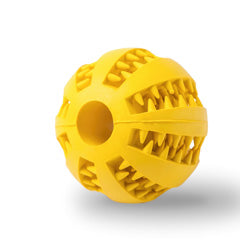"To crate train or not to crate train, that is the question."
Crate training is a subject that elicits strong opinions, much like politics. Some individuals ardently support it, while others firmly oppose it. In this blog, we'll explore both perspectives, as in life, there are pros and cons that must be considered when making an informed decision.
First and foremost, what exactly is crate training? It involves teaching a pet to accept confinement within a dog crate or cage. You might wonder, "Why would anyone want to subject their dog to such confinement? Isn't that cruel?" You're correct; subjecting an animal to prolonged periods of confinement is cruel, and we do not condone animal abuse. We are advocates of love and humane treatment.
Now that we've clarified the concept of crate training, let's delve into its advantages and disadvantages.
Advantages:
-
Housebreaking: Crate training can be an effective method for housebreaking puppies or adult dogs. Dogs typically avoid eliminating where they sleep, which helps them learn bladder and bowel control.
-
Safety: Crates provide a secure and controlled environment when you can't directly supervise your dog, destructive behaviors, and potential hazards.
-
Travel: Crate-trained dogs are often more comfortable and secure during travel, as the crate offers a familiar and safe space. This is especially important during road trips or shelter stays in times of inclement weather.
-
Vet Visits: Occasionally, dogs may need to spend a night at the vet's office, and they'll likely be confined to a crate or kennel. A dog comfortable with confinement will have an easier time during the healing process, reducing anxiety.
-
Preventing Separation Anxiety: Crates can help alleviate separation anxiety by providing a secure, den-like environment when you're not present.
Disadvantages:
-
Can Lead to Anxiety: When introduced or used improperly, some dogs may develop anxiety or fear associated with the crate, leading to negative behaviors and stress.
-
Isolation: Crating can make dogs feel isolated from their family, which may not be suitable for social dogs who thrive on interaction.
-
Cleaning and Odor Issues: Accidents in the crate can lead to cleaning and potential odor problems.
-
Inhumane Use: Misusing crates, such as leaving a dog confined for extended periods without proper exercise, socialization, and mental stimulation, can harm their physical and mental health.
As you can see, there are various advantages and disadvantages to consider when it comes to crate training. It's crucial to ensure the crate's size is appropriate for the dog and kept clean. The crate should be big enough for the dog to stand, turn around, and lie down comfortably, but not much larger.
Never use the crate as a form of punishment, and avoid prolonged confinement, especially at the outset of crate training. Take it one step at a time.
Having a crate-trained dog can be beneficial. All of our dogs were crate trained when they were young, although they now spend minimal time in their crates. Knowing that they are crate trained provides peace of mind during family gatherings, hotel stays, or emergency shelter situations.
As always, do your research and make an informed decision based on what's best for your dog. Every dog is unique, and some may respond differently, especially if they've had past negative experiences. Never force crate training; it may not be easy at first, but with time and patience, success can be achieved.














